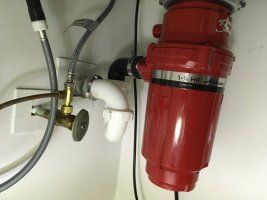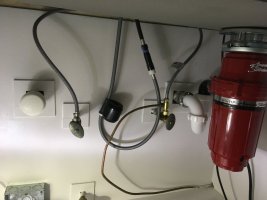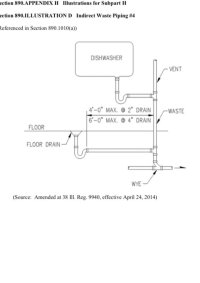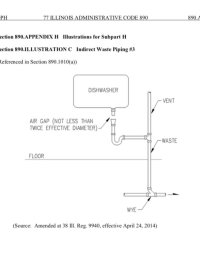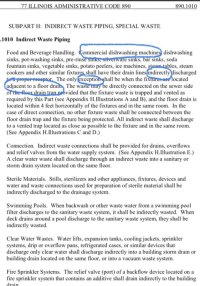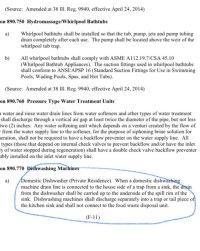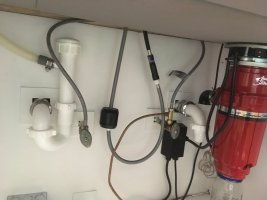Hi there folks, newbie here. Big fan of this forum and a DIYer with more than basic knowledge. I have probably never needed to register as all of my a questions so far has been answered but not this time. See, I have searched entire forum and found some info but only to assure that my way of thinking is good. Terry is probably tired of posting same picture of how dishwasher should be connected thru air gap to the disposal....Anyway here is my story:
Illinois: not allowed to connect DW to disposal and we dont want to install airgap.
Sink: removed double and installed single basin and disposal. Disposal is higher by 1-1/2 than wall drain so it's fine.
Because initially in 1995 they have installed double sink and there are two waste outlets in the wall so needles to say DW has been connected to the left basin and disposal to the right with DW with high loop under the counter.
I should have known better before I have started this renovation that DW will have no air break/air allowance for the p-trap to work properly if I connect it to the left drain outlet alone and therfore it will siphone and allow sewer gas to enter thru DW. AAV is not allowed as I thought of installing it on top of DW tailpiece. The only two things I on my mind are these.: 1)maybe there is a high loop in the wall connecting both drain outlets and averything is going to be OK 2) maybe I can run an under the top of sink connection between DW tailpiece and the inlet hole on the disposal unit for air allowance.....but it will only work if there is no water in the sink. I guess it is not inspector way of doing thing and sooner or later we will have to face inspector when selling the condo.
Other things: new slim line disposal is very powerfull - when I ran it with sink full of water, the water startem to leak from under the cap on the left side so Im afraid the dirty water from disposal may occasionally enter the DW...maybe it is the problem of how the pipes are connected inside the wall? I cannot open the back wall as 1)the sink cabinet has been alredy renovated 2) pipes are brass (I will not handle it myself) 3) speciall condo board authorization needed for all rough work. So my question is this. How to have the disposal and DW with DW properly vented but not thru airgap having single basin sink in Illinois without redoing in wall rough? The last option is to remove the disposal out of equation...
Once again I appreciate your help advice and answers
EDIT: attached photos
Illinois: not allowed to connect DW to disposal and we dont want to install airgap.
Sink: removed double and installed single basin and disposal. Disposal is higher by 1-1/2 than wall drain so it's fine.
Because initially in 1995 they have installed double sink and there are two waste outlets in the wall so needles to say DW has been connected to the left basin and disposal to the right with DW with high loop under the counter.
I should have known better before I have started this renovation that DW will have no air break/air allowance for the p-trap to work properly if I connect it to the left drain outlet alone and therfore it will siphone and allow sewer gas to enter thru DW. AAV is not allowed as I thought of installing it on top of DW tailpiece. The only two things I on my mind are these.: 1)maybe there is a high loop in the wall connecting both drain outlets and averything is going to be OK 2) maybe I can run an under the top of sink connection between DW tailpiece and the inlet hole on the disposal unit for air allowance.....but it will only work if there is no water in the sink. I guess it is not inspector way of doing thing and sooner or later we will have to face inspector when selling the condo.
Other things: new slim line disposal is very powerfull - when I ran it with sink full of water, the water startem to leak from under the cap on the left side so Im afraid the dirty water from disposal may occasionally enter the DW...maybe it is the problem of how the pipes are connected inside the wall? I cannot open the back wall as 1)the sink cabinet has been alredy renovated 2) pipes are brass (I will not handle it myself) 3) speciall condo board authorization needed for all rough work. So my question is this. How to have the disposal and DW with DW properly vented but not thru airgap having single basin sink in Illinois without redoing in wall rough? The last option is to remove the disposal out of equation...
Once again I appreciate your help advice and answers
EDIT: attached photos

